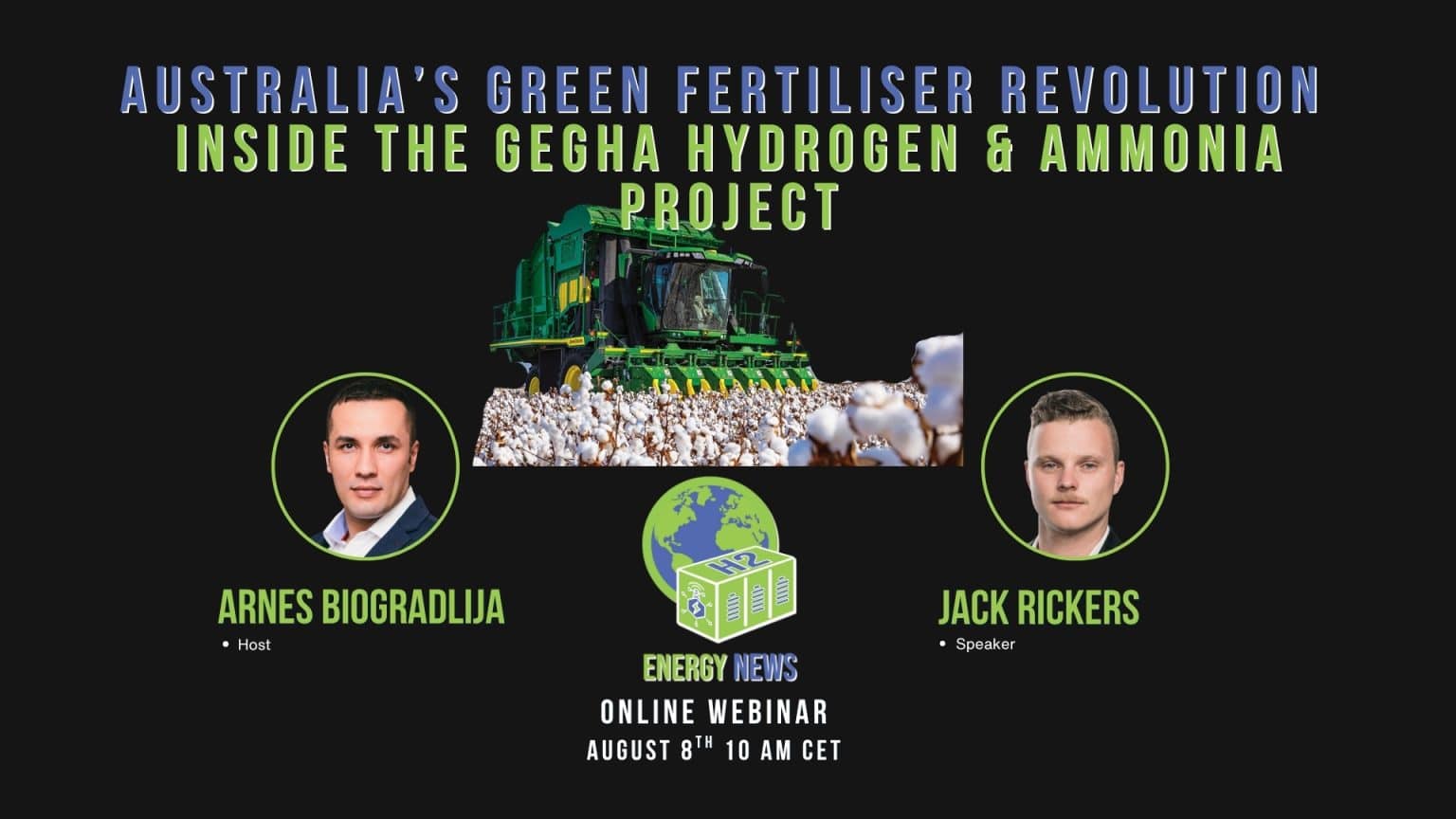On August 8th at 10 AM CET, Jack Rickers, Commercial & Business Development Lead at Hiringa Energy, delivered a detailed briefing on the Good Earth Green Hydrogen & Ammonia (GEGHA) project—a A$115 million commercial pilot in Moree, NSW, positioned to disrupt Australia’s fertilizer markets and advance agricultural decarbonization.
The session underscored green ammonia’s emerging role as a cornerstone for lowering carbon footprints in cotton and wider farming operations amid evolving carbon policies and market pressures.
WATCH THE WEBINAR
GEGHA combines 36MW of solar photovoltaic capacity with 15MW of electrolysis to produce roughly 4,500 tones of green ammonia annually. This output is significant given ammonia’s potential to substitute conventional nitrogen fertilizers, a major source of agriculture’s greenhouse gas emissions. The project leverages direct injection technology, applying anhydrous ammonia directly to soil, which, according to Rickers, reduces carbon intensity by approximately 1.2 tones CO₂-e per tone compared to traditional urea fertilizers.
Localizing production mitigates reliance on imported fertilizers, which are vulnerable to price volatility and logistics constraints. Rickers highlighted that imported urea costs can incur an additional A$120–150 per tone due to coastal freight and handling in Australia, reinforcing the economic rationale behind GEGHA’s on-site synthesis. However, electrolyzer efficiency at 15MW scale—estimated between 55–60%—and long-term cost competitiveness remain to be proven at scale, especially given the current electrolyzer capex hovers above A$800/kW, exceeding some 2030 IRENA benchmarks by roughly 25%.
The webinar also framed GEGHA within tightening carbon compliance landscapes. The European Union’s Carbon Border Adjustment Mechanism threatens A$80–100 per tone tariffs on carbon-intensive imports, increasing pressure on Australian cotton producers to decarbonize input materials. Domestically, forthcoming mandatory climate disclosures elevate risks for agribusinesses lacking transparent emissions accounting. Here, Hiringa’s partnership with Sundown Pastoral—a co-investor and operator of the traceable Good Earth Cotton program—provides a model for integrating farm-level emissions reporting verified by third-party life cycle assessments.
Operationally, the project blends green ammonia production with hydrogen applications for irrigation and heavy vehicles. Sundown Pastoral plans to convert over 30 irrigation pumps to hydrogen dual-fuel use, while hydrogen refueling infrastructure remains under development, exposing offtake and demand risks. Currently, only about 40% of Phase 1’s ammonia output is contracted internally, with external hydrogen sales contingent on broader infrastructure rollouts.
Dynamic energy management is another pillar of GEGHA’s strategy. Using digital optimization algorithms refined in New Zealand, Hiringa balances power flows between ammonia synthesis, hydrogen storage, and grid exports. This approach addresses renewable intermittency, yet the 600-tonne ammonia storage buffer provides a limited 15-day operational reserve, a potential vulnerability in prolonged low-sun periods.
GEGHA’s staged rollout—Phase 1 targeting 16 tones per day by early 2027, scaling to 60 tones per day in subsequent phases—relies heavily on electrolyzer cost reductions and firm offtake agreements to scale effectively. The project exemplifies how green ammonia can function as a localised, resilient decarbonisation lever for agriculture, though its commercial viability will ultimately depend on the interplay of technology performance, market incentives, and regulatory frameworks shaping Australia’s hydrogen economy.
Stay updated on the latest in energy! Follow us on LinkedIn, Facebook, and X for real-time news and insights. Don’t miss out on exclusive interviews and webinars—subscribe to our YouTube channel today! Join our community and be part of the conversation shaping the future of energy.





